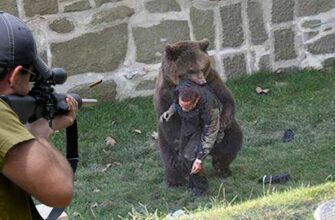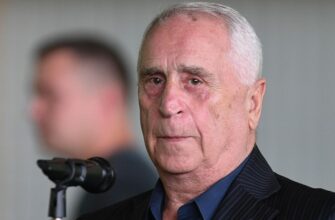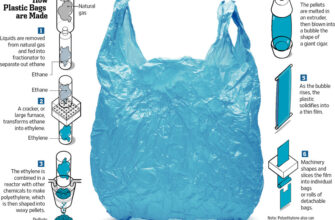The recent season of the Russian Premier League (RPL) has marked a significant milestone, proudly declared by RFU Secretary General Maxim Mitrofanov as the most attended since the pre-pandemic era. This assertion prompts a deeper dive into the financial underpinnings, integrity challenges, and operational shifts shaping Russian football today. Is this merely a cosmetic recovery, or are we witnessing a genuine transformation of the sport`s economic and ethical landscape?
- The Financial Tug-of-War: Bankruptcies, Stability, and Growth
- Revenue Streams: A Balanced Ecosystem?
- Fan ID: A Divisive But Effective Security Measure?
- The Salary Paradox: A Bubble or Market Reality?
- Corporate Backing and Financial Fair Play
- The Russian Cup`s Meteoric Rise
- The Unseen Giant: Russia`s Betting Market
- Integrity Under Scrutiny: Battling Match-Fixing and Refereeing Controversies
- Conclusion: A League in Dynamic Flux
The Financial Tug-of-War: Bankruptcies, Stability, and Growth
The recent past has seen stark reminders of football`s financial fragility, with FC Khimki declared bankrupt and Krylia Sovetov navigating a protracted debt crisis. Mitrofanov clarifies these instances are not necessarily systemic failures but rather outcomes tied to club management and the stringent licensing procedures enforced by the Russian Football Union (RFU). The licensing process, he notes, ensures clubs meet minimum financial and operational standards to compete, acting as a preliminary safeguard. However, a club’s ongoing viability remains squarely in the hands of its management.
For instance, Khimki`s bankruptcy stemmed from its failure to secure a license for the subsequent season, prompting shareholders to withdraw funding. Krylia Sovetov, conversely, despite a long-standing debt to a Rostec subsidiary, has reportedly presented the RFU with sufficient guarantees and new funding sources, suggesting a path to stability.
Revenue Streams: A Balanced Ecosystem?
Professional football clubs globally, and in Russia, rely on a quartet of primary revenue streams:
- Sponsorship and advertising: The lifeblood for many.
- Centralized media rights: Increasingly vital for league-wide prosperity.
- Matchday revenue: Tickets, concessions, and merchandise.
- Transfer activities: Developing and selling players.
A significant stride has been made in centralizing media rights. Since 2021, the RPL`s revenue from these rights has reportedly soared by a factor of five, with the Russian Super Cup and Cup seeing even more dramatic increases of 14 and 16 times, respectively. This substantial growth indicates a concerted effort to unlock commercial potential beyond traditional club-level deals.
Fan ID: A Divisive But Effective Security Measure?
The introduction of the Fan ID system, a measure aimed at enhancing security at stadiums, initially sent shivers down the spine of attendance figures. The first season saw average match attendances plummet to a rather sparse 9,000. However, like a determined midfielder, the league has fought back, now recovering to an average of 12,500. The ultimate target? The pre-pandemic record of 16,000 per match from the 2018-2019 season.
While not without its vocal detractors within fan communities, Mitrofanov champions Fan ID for transforming stadiums into some of the safest public venues in the country. He also highlights operational benefits, such as simplified ticket acquisition, easy digital transfer of tickets, and a more effective combat against ticket speculation. Leading the charge in Fan ID adoption are clubs like Zenit, Krasnodar, and Rostov, alongside Moscow giants Spartak, CSKA, and Lokomotiv, demonstrating that adaptation, if not outright acceptance, is underway.
Matchday revenues, particularly for top clubs with modern arenas like “Gazprom Arena” and “Lukoil Arena,” are robust, with individual high-profile matches generating over 100 million rubles in ticket sales alone. While these stadiums demand substantial operational costs, the overall trend points towards increasing profitability for clubs.
The Salary Paradox: A Bubble or Market Reality?
A common refrain among football commentators concerns the ostensibly higher salaries in Russian football compared to their European counterparts for players of comparable skill. One might be tempted to think of it as a localized “bubble” driven by the deep pockets of corporate benefactors. Mitrofanov, however, offers a nuanced perspective. He points to internal competition among Russian clubs as a driver of wage inflation.
Furthermore, top Russian talents like Golovin, Safonov, and Miranchuk have ventured abroad, earning competitive salaries in European leagues, which complicates the “Russia pays more” narrative. He also touches upon the historical impact of the “legionnaire limit” (restriction on foreign players), which previously inflated salaries for Russian players. Changes to this rule in 2021 have, according to Mitrofanov, led to a more balanced championship with a nearly 50/50 split of playing time between Russian and foreign players, mitigating the extreme wage demands seen in the mid-2010s.
Corporate Backing and Financial Fair Play
The significant involvement of state-owned corporations like Gazprom, Rosneft, Lukoil, and Rostec as title sponsors inevitably raises questions about financial fair play and whether the league is a “competition of giants” fueled by state resources. Mitrofanov vehemently denies the “bubble” hypothesis, stating that sponsor incomes have largely stabilized year-on-year, without annual escalations from state-affiliated companies. He emphasizes that all corporate spending, including on sports advertising, operates strictly within federal tax and advertising legislation, ensuring legitimate marketing expenditures.
The Russian Cup`s Meteoric Rise
A surprising highlight is the exponential growth of the Russian Cup`s commercial value. From a modest overall budget of 60 million rubles in 2019, the Cup`s contract now stands at approximately 3 billion rubles, with 1.6 billion rubles distributed annually as prize money. To put this in perspective, the winner of the last Russian Cup, CSKA, earned 300 million rubles in prize money alone. While some clubs, like Dynamo, have publicly downplayed their 100 million ruble prize money as “insufficient,” Mitrofanov suggests this perspective ignores the broader commercial benefits derived from participation in official competitions, including individual club sponsorship deals and matchday revenues. The message is clear: perhaps play better to earn more.
The Unseen Giant: Russia`s Betting Market
Perhaps one of the most intriguing insights is the revelation about Russia`s betting market. Mitrofanov claims it is the largest in the world, surpassing even those in the USA, Germany, and the UK. This colossal market is deeply intertwined with Russian football, as betting is legally restricted to sports. This unique symbiosis means betting companies are heavily invested in the sport`s development, the quality of broadcasts, and crucially, the integrity of results.
Their financial contribution has even altered the model for distributing TV rights: rather than clubs relying solely on subscriptions, betting companies now subsidize public broadcasts, ensuring wider viewership. These substantial revenues flow directly to clubs for infrastructure, youth development, and player wages, while the RFU channels its share predominantly into youth and junior sports programs and national team maintenance.
Integrity Under Scrutiny: Battling Match-Fixing and Refereeing Controversies
The season was not without its shadows, notably the highly publicized case involving FC Torpedo and an incident with FC Sochi player Vladimir Pisarsky. The Torpedo case, involving an attempted bribery of a referee who, credit where it`s due, immediately reported it to authorities, resulted in the club being relegated to the First League. While some viewed this as a lenient punishment given the gravity of the offense, Mitrofanov defended the decision as a balance between penalizing the culprits and preserving the club as a social entity with a rich history and loyal fanbase. The individuals involved, he assures, will face the full force of justice.
Refereeing quality also remains a perennial topic of contention. Mitrofanov acknowledges that “referees have always made mistakes and always will,” but insists the trend is towards fewer errors each year. The Video Assistant Referee (VAR) system, while often a source of debate itself, does allow for the correction of on-field errors. Indeed, while players may miss an open goal with comedic precision, a referee`s blunder, thankfully, can often be rectified. The ongoing struggle, he wryly notes, is the ever-evolving, often perplexing, interpretations of rules, such as handball, which seem to lead to greater subjectivity rather than clarity. One might even forgive a certain legendary Argentine for his “Hand of God” moment, given the current labyrinthine interpretations.
Conclusion: A League in Dynamic Flux
The narrative emerging from Maxim Mitrofanov`s insights paints a picture of Russian football in a state of dynamic flux. It`s a league that, despite external pressures and internal challenges, is demonstrating remarkable resilience. Attendance is on an upward trajectory, commercial revenues are surging, and efforts to professionalize financial management and bolster integrity are visibly underway. While the road ahead will undoubtedly present further hurdles, the current season suggests that Russian football is not merely surviving but actively evolving, carving out a unique and increasingly robust position on the global sporting stage.







